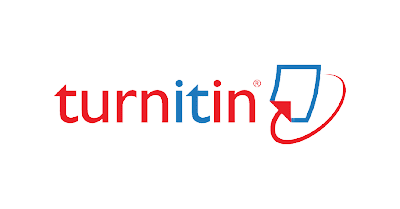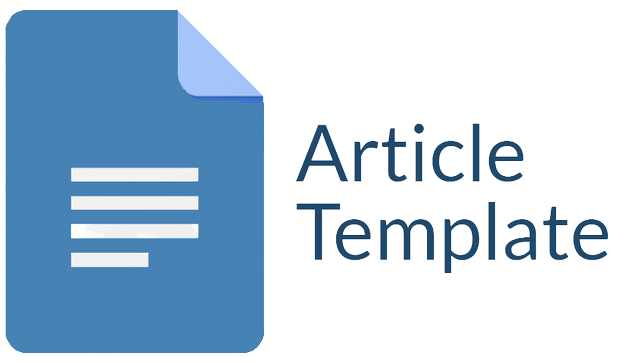DESAIN ROBOT KESEHATAN UNTUK PEMINDAH PASIEN CORONAVIRUS (2019-nCoV) DI RUMAH SAKIT
Abstract
Tenaga medis akan berkontak langsung terhadap pasien dalam keadaan tertentu, yaitu ketika memindahkan pasien dan merawat pasien secara langsung. Untuk mengatasi terjadinya kontak langsung antara pasien Covid-19 dengan tenaga medis, dimanfaatkan robot sebagai pemantauan jarak jauh untuk tenaga medis terhadap pasien Covid-19. Desain robot ini dapat menyelesaikan beberapa permasalahan yang tidak terselesaikan oleh robot-robot yang telah digunakan saat ini. Sehingga peneliti membuat desain robot kesehatan pemindah pasien yang dapat diakses secara jarak jauh menggunakan WiFi untuk mempermudah tenaga kesehatan dalam menjalankan pekerjaannya selama pandemi Covid-19.Dari beberapa studi literatur yang di dapat dari buku maupun jurnal, terdapat beberapa cara memindahkan pasien dalam keadaaan darurat. Cara yang baik diterapkan untuk perancangan desain robot mengangkat pasien yaitu Seat Carries (Two Rescuers). Dari hasil desain yang telah dibuat, didapatkan bahwa robot pemindah pasien memiliki kemampuan untuk meminimalisir tenaga medis dengan berkontak secara langsung dengan pasien. Desain robot pemindah pasien dirancang dengan dimensi yaitu memiliki panjang 922,40 mm, lebar 999,67 mm, dan tinggi 998,50 mm. Tenaga medis dapat memantau pasien secara jarak jauh menggunakan tablet samsung A8 yang telah terpasang aplikasi android yang terhubung ke raspberry. Selain itu, proses pemantauan pasien dilakukan secara aman karena robot bergerak dengan mengandalkan kamera logitech C922.
Downloads
References
Annur. (2021). Total 2.032 Tenaga Kesehatan Meninggal Akibat Covid-19 Hingga Oktober 2021. Kata Data.
Covid-19, S. T. P. (2021). Analisis Data COVID-19 Indonesia (Update Per 24 Oktober 2021).
da Rosa Mesquita, R., Francelino Silva Junior, L. C., Santos Santana, F. M., Farias de Oliveira, T., Campos Alcântara, R., Monteiro Arnozo, G., Rodrigues da Silva Filho, E., Galdino dos Santos, A. G., Oliveira da Cunha, E. J., Salgueiro de Aquino, S. H., & Freire de Souza, C. D. (2021). Clinical manifestations of COVID-19 in the general population: systematic review. Wiener Klinische Wochenschrift, 133(7–8), 377–382. https://doi.org/10.1007/s00508-020-01760-4
Haramoto, E., Malla, B., Thakali, O., & Kitajima, M. (2020). First environmental surveillance for the presence of SARS-CoV-2 RNA in wastewater and river water in Japan. Science of the Total Environment, 737. https://doi.org/10.1016/j.scitotenv.2020.140405
Hidayani, W. R. (2020). Faktor Faktor Risiko Yang Berhubungan Dengan COVID 19 : Literature Review. Jurnal Untuk Masyarakat Sehat (JUKMAS), 4(2). https://doi.org/10.52643/jukmas.v4i2.1015
Panasonic. (2019). Interview with the developer of Resyone, a robot that helps users get out of bed.
Samani, H. (2021). Robotics for Pandemics. Chapman and Hall/CRC. https://doi.org/10.1201/9781003195061
Sarana, L., Susilo, Darwis, Pahlevi, Herman, & Sidabutar. (2009). Pedoman Pertolongan Pertama. Markas Pusat Palang Merah Indonesia.
Saúde., O. M. da. (2020). WHO Director-General’s opening remarks at the media briefing on COVID-19 - 11 March 2020.
Sugiyono. (2019). Metode Penelitian Kuantitatif, Kualitatif, dan R&D (1st ed.). Penerbit Alfabeta.
Sukmawati E, wahyunita yulia sari, & indah sulistyoningrum. (2018). Farmakologi Kebidanan. Trans Info Media (TIM). https://scholar.google.com/scholar?oi=bibs&cluster=11760770443894442881&btnI=1&hl=id
Urrahman, D., PMM, S. E., & Aziz, A. (2021). INJURY PERAWAT PADA PENGGUNAAN ALAT PELINDUNG DIRI (APD) DALAM PELAYANAN COVID-19. Jurnal Kesehatan Karya Husada, 9(1). https://doi.org/10.36577/jkkh.v9i1.453
Wijaya, F. H. (2020). Perancangan dan Pengembangan Desain Kursi Roda Elektrik dengan Fitur Berdiri untuk Penyandang Disabilitas.
Karren, K. J., Hafen, B. Q., Limmer, D., & Mistovich, J. J. (2012). First Aid For Colleges And Universities Tenth Edition. San Francisco: Benjamin Cummings .
Copyright (c) 2022 Wahyu Dian Pratiwi, Beni Widiawan

This work is licensed under a Creative Commons Attribution-ShareAlike 4.0 International License.
Jurnal allows anyone to compose, correct, and do derivative works, even for commercial purposes, as long as they credit for the original work. This license is the freest. It is recommended for maximum distribution and use of licensed material.
The submitted paper is assumed not to contain any proprietary materials that are not protected by patent rights or patent applications; The responsibility for technical content and protection of proprietary materials rests with the authors and their organizations and not the responsibility of journal or its editorial staff. The primary (first/appropriate) author is responsible for ensuring that the article has been viewed and approved by all other authors. The author's responsibility is to obtain all necessary copyright waivers to use any copyrighted material in the manuscript before submission.
Jurnal Pendidikan, Sains dan Teknologi allows the author(s) to hold the copyright without restrictions and allow the author(s) to retain publishing rights without restrictions. Jurnal Pendidikan, Sains dan Teknologi CC-BY-SA or an equivalent license as the optimal license for the publication, distribution, use, and reuse of scholarly work. Jurnal Pendidikan, Sains dan Teknologi allows the author(s) to hold the copyright without restrictions and allow the author(s) to retain publishing rights without restrictions. Jurnal Pendidikan, Sains dan Teknologi CC-BY-SA or an equivalent license as the optimal license for the publication, distribution, use, and reuse of scholarly work.
In developing strategy and setting priorities Jurnal Pendidikan, Sains dan Teknologi recognize that free access is better than priced access, libre access is better than free access, and libre under CC-BY-SA or the equivalent is better than libre under more restrictive open licenses. We should achieve what we can when we can. We should not delay achieving free in order to achieve libre, and we should not stop with free when we can achieve libre.
Jurnal Pendidikan, Sains dan Teknologi is licensed under a Creative Commons Attribution-ShareAlike 4.0 International License.
You are free to:
- Share a copy and redistribute the material in any medium or format
- Adapt a remix, transform, and build upon the material for any purpose, even commercially.
- The licensor cannot revoke these freedoms as long as you follow the license terms.






